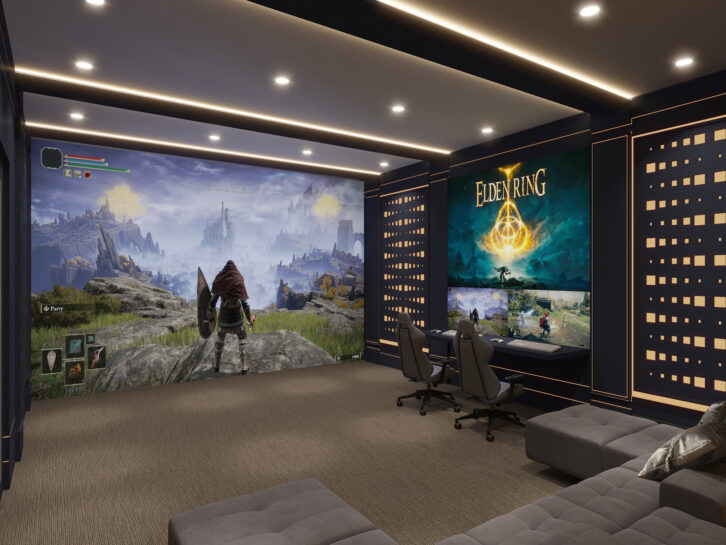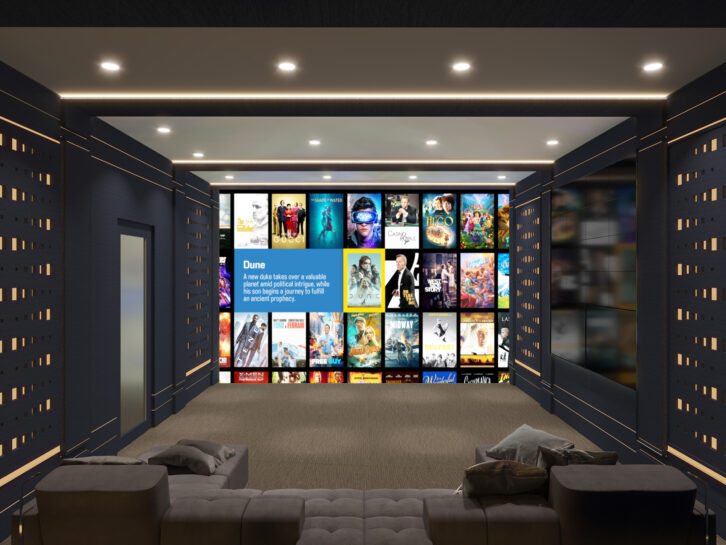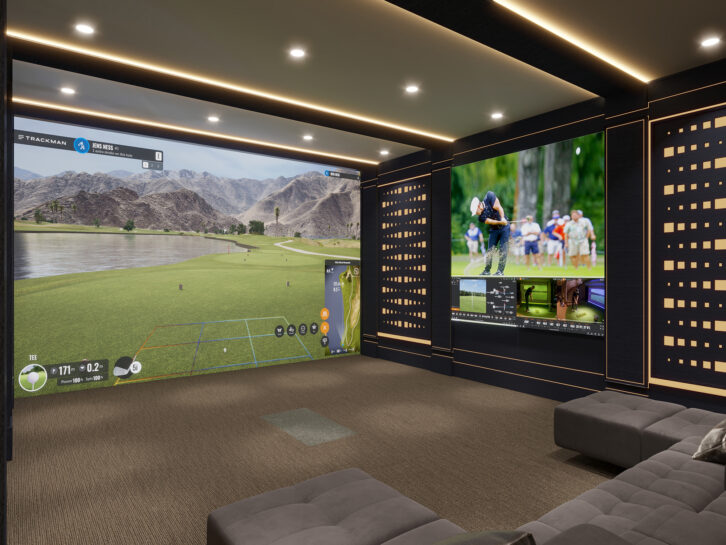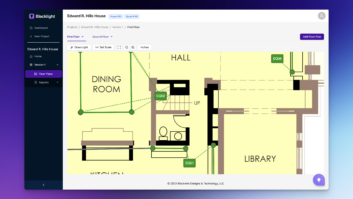We have enjoyed following and applying new and evolving technologies to the private cinema design and implementation process as it morphs and presents new options. This is both a challenging and stimulating process that allows interior cinema room designers to consider presenting products that provide significantly improved performance into a well-crafted and aesthetically pleasing entertainment space.

The fundamental goal of staying on the cutting edge while still being able to deliver a robust, practical, and elegant solution is an ongoing learning process. I want to touch on a few technology pathways that are both timely and prolific — and that affect how we approach the design of these entertainment spaces.
Video Content
In the world of video playback, the content providers and content server systems are rapidly improving. Today’s streaming services offer high playback specifications, providing 4K and HDR with more consistency. In addition, products like Kaleidescape offer powerful servers that can store massive amounts of content while providing playback at the highest level, rivaling commercial movie theaters or better!
Video Reproduction
The two primary methods of reproducing high-resolution video for all formats are still two-piece projection systems and flat-panel LED devices. Both technologies have experienced significant improvements in performance and size, which makes it easier to integrate into the aesthetics and physical installation of a room. Space requirements for each are different — a flat-panel product only requires several inches of depth, where a projection system can require additional room depth and a dedicated hush box, soffit system, or separate mechanical space, plus a separate screen wall. The projector requires a space to mount it either in the screening room, hopefully invisibly, or in an immediately adjacent mechanical/projection booth space.
Also by Lisa Slayman: The Evolution of Home Theater
From a cost perspective, based on high-performance systems, the projector/screen solution is the most cost-effective, but the level of brightness and contrast are not as powerful as the performance specification of high-end LED panels. Two-piece projection can deliver anywhere from standard content to Digitally Compliant Initiative (DCI) true digital cinema. One of the challenges of projectors are the physical specifications and size. The highest-performance DCI products are large and generally require a coolant system. Barco has crossed that threshold and offers a DCI machine capable of playback of all formats that provides a smaller form factor, high-quality optics, and internal cooling.
I wanted to mention projection screen walls briefly. It is possible to provide the ultimate visual and audio experience by going wall-to-wall and floor-to-ceiling with a perforated screen wall. Using perforation provides the most accurate front-stage speaker playback by allowing the sound to come from behind the screen in a properly positioned LCR configuration.

LED panels are making waves, there is no question. The usual suspects from Samsung, Sony, LG, and Quantum Media Solutions are providing products that can reproduce up to 8K HDR and sizes that vary from 81 inches up to 325 inches wide (6 feet 9 inches up to 27 feet wide). Since this is a one-piece solution, architectural real estate becomes less of an issue. The limits to these products are that they can be very pricey, with the larger units tipping more than $1.5 million, and the LED surface is not perforated, so the audio LCR playback speaker system must be located on top, sides, or bottom. This screen wall speaker application has been addressed well by several well-known speaker manufacturers. Another manufacturer option you can choose is the reflective surface approach, which bounces the LCR output from the screen surface, emulating accurate LCR placement.
Audio Reproduction
The premise of immersive audio is built around either object-based or channel-based reproduction in a 270-degree soundfield plane. Object-based reproduction treats each sound source/channel individually with its strategically placed location and direction. Channel-based reproduction, provided by Dolby Atmos, DTS, and Auro Technologies, are more of a pre-defined speaker configuration for 5.1, 7.1 and high/low speaker locations in some cases. Channel-based immersive audio is the most used.
Generally, you will have a higher speaker count with object-based immersive audio as it can be utilized to playback significant widescreen, side, rear, and ceiling channel speaker systems. Both formats have their advantages and utilizations. The ultimate solution is a combination of both Dolby Atmos and DTS-X, as movie content is mixed and produced in the studio’s own preferred format.
Also by Lisa Slayman: Five Things I’ve Learned About Designing for Luxury Clientele
From the interior designer’s perspective, it is crucial for architectural accommodation to be considered for ceiling speaker and wall speaker height to allow for proper playback placement. When you are using a higher number of speakers, keeping them invisible is aesthetically preferable. I can’t stress how powerful it is to sit down in a professionally designed screening room in a beautiful home where the speakers are all strategically and invisibly built in. The playback experience is magical!
Custom Seating and Surround Sound Channels
Many people don’t take into consideration how using a high-back standard cinema chair affects your ability to hear the rear and high surround speaker channels clearly. Because the headrests are often too high, a percentage of the sound is being blocked or muffled by the upholstery and headrest. There are solutions for this. One great example is Cineak seating’s patented vertically motorized backrest system. The user can adjust the backrest to the appropriate height based on the content and not miss any of the surround effect channels. Due to the programmability of the motorized features, the headrest and backrest can be custom-programmed to move into the proper position with the touch of a button.
Multi-Use Spaces
One interesting and exciting new trend that checks the box for many clients is the integration of multiple entertainment technologies in a single space. Can you imagine having your private screening room coupled with a golf simulator in the same space and sharing the large screen video wall. Start with comfortable seating with a digital tee-off pad, then add gaming screens and a game console with proprietary seating or shared functionality from your cinema seating. Sounds like heaven for the ultimate gamer, golfer, sports fan, and movie connoisseur, and it is all possible.

Cinema Lighting
As cinema interior designers, we have a portfolio of substantial new and exciting creative lighting solutions available. This includes primary lighting, accents, reveals, stairstep, down, and sconces. LED lighting can be used in many different ways and can truly create an environment that will set the mood for an amazing cinema experience.
In Conclusion
It is important that the dealer guide your clients through the many options that are available to them. Hopefully, some of the information here will provide some insights for your screening room efforts. We are here to support you, provide education, and get answers to any questions you might have. The odds are quite good that if you present your client with all of the credible options to them, your revenues will grow accordingly.
Please feel to reach out anytime to discuss or review your project with us.







